How to wash membrane clothes in a washing machine?

The technological process moves forward at an elusive pace. It would seem that five years ago, few people knew about the existence of membrane clothing. Today, mothers of babies, athletes and just ordinary people who want to feel warm, despite the weather, cannot do without it. The question of how to wash membrane clothes in a washing machine is of concern to many, because you want to keep its practical properties for as long as possible.

Features and types of membrane clothing
Despite the fact that the membrane began to be used everywhere not so long ago, its history takes us back to the distant 1969. It was then that Bill and Robert Gore were able to produce a unique fabric called gore-tex. It took more than six years before the material appeared in the first clothing line. The membrane is the thinnest film with micropores made of foamed polytetrafluoroethylene. Its main advantages are:
- Ease;
- 100% impermeability of moisture inside;
- Extraction of moisture from the inside.
- The material "breathes".

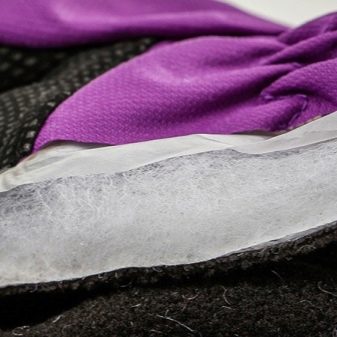
The fabric contains 2, 3 or 2.5 layers. In each case, the membrane film is attached to the wrong side of the base and requires additional lining. In the three-layer version, the lining becomes a fine mesh of knitted fiber.In the variant, where there are 2.5 layers, small foamed knitted pimples are sprayed onto the main layers.
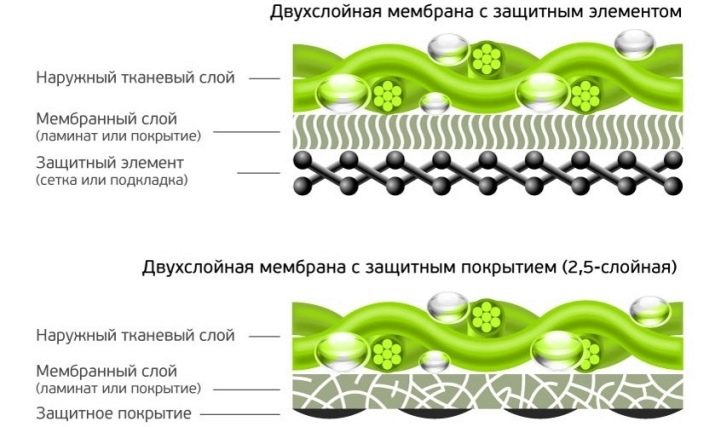
It is worth noting that the outer fabric is also not left untreated and is coated with a special DWR compound that has additional water-repellent properties.
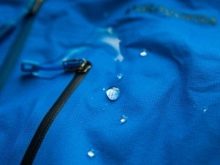

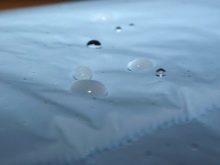
Needless to say, such a multi-layered and thoughtful fabric does not know the word “get wet”. Even with abrasion from the top fabric of the DWR cover, the fabric, thanks to the membrane, will never let moisture through to the body. In addition, all seams in the models are taped, providing an even greater degree of protection. Today there are several types of membrane:
- Hydrophilic. The hydrophilic membrane has moved away from the key concepts of the membrane and the presence of pores. In this form, there are no pores, and therefore the condensate from body evaporation during physical exertion settles on the inner surface. Further, according to the principle of moisture diffusion, sweat particles come to the outer surface;
- Pore. Porous Gore-Tex also does not get wet, although it has pores. The secret here lies in their minimum size, which is ten times larger than a raindrop. Through the pores, internal moisture freely escapes, leaving the body dry. Compared with the first type, the porous variety during washing should be treated with the utmost care;
- The combined type combines the advantages of a hydrophilic and porous material. The membrane here is covered with a polyurethane hydrophilic film, which significantly affects the cost of the product.

Types of membrane clothing depending on the purpose:
- Daily;
- professional;
- For active sports.
Each type has its own requirements. So, the everyday membrane differs from others in its large weight and the amount of filler.This type includes suits, jackets and pants for walking, as well as overalls for children from birth. The professional series is suitable for climbers and skiers. The third, the lightest and weightless, belongs to clothes for runners and is called Gore-Tex Active.






Can it be washed with regular detergent?
The membrane is a complex material, and therefore its care must also be delicate. Only then will the jacket or overalls be able to last for a long time without losing their water-repellent properties. Before you understand whether it is possible to wash the membrane with ordinary powder, you should find out all the compounds that negatively affect the fabric. So, material does not tolerate phosphates and sulfates, which means that washing with ordinary or liquid powder, even of the best quality, is prohibited. Do not expose the membrane to bleaches and stain removers, because manufacturers also cannot do without sulfates in them.
It should be noted another procedure that cannot be done. So, choosing a machine wash, it is important to abandon the "spin" mode, since the film should not be subjected to aggressive twisting. It is possible that the drying of the product in this embodiment will be much longer, but the result, which is safe for the structure, is worth it. In addition, the very property of the membrane allows you to remove contaminants from it immediately with ordinary water, and therefore washing in a typewriter is an infrequent procedure.

Necessary detergents for washing
It is impossible to wash a microporous surface with conventional means, however, there is one familiar detergent that can also be used for a membrane. natural laundry soap without fragrances and other additions, made in accordance with GOST, perfectly cleans any pollution, like hundreds of years ago.
To clean with it, it is not at all necessary to rub the product with it. A coarse grater will help make soap shavings that can be stored and used at the right time by adding to the washing machine drum.


Another tool that helps with washing - mild sulfate-free shampoo. Washing membrane clothes with them is not only safe, but also pleasant. The light aroma of shampoo will always be more pleasant than the smell of laundry soap. Here, however, a matter of taste preferences.
Liquid soap can also be used in the washing machine. It should also be of high quality and not contain harmful substances in its composition.

If you want to approach the issue of washing professionally, it is better to trust the experts and purchase a special membrane gel concentrate. It can be called differently, but it always has a liquid consistency. Any sports store is ready to offer several options for such products, and therefore there are no problems with the search.
Unfortunately, out of ignorance, people often make mistakes. So, having washed a jacket once with ordinary powder, you should not be upset and resign yourself to the thought of its hopelessness. 1-2 washings cannot significantly affect the membrane, however, further manipulations should be carried out with proven means.
If the loss of functional qualities is still detected, experts recommend using a water-repellent aerosol agent.

Clothes preparation
Many, when faced with the peculiarities of washing for the first time, decide to avoid it by daily removing dirt with a damp cloth. This decision is partly true, but still, hand or machine washing should be present.The fact is that the membrane not only does not let water in, but also actively attracts dust. Clogging of the pores leads to a violation of the “breathing” of the tissue, and hence to the loss of the entire meaning of the properties of the tissue. Experts recommend washing outerwear 2-3 times per season.
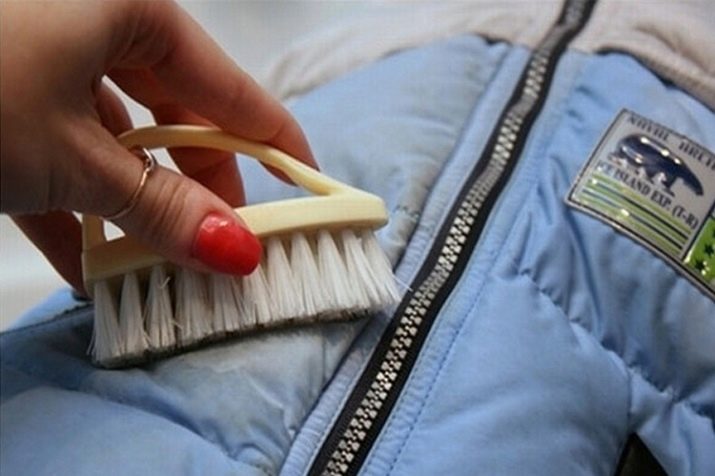
So, if the laundry is already scheduled, it is important to prepare the clothes. To do this, a jacket, winter suit or overalls are fastened with all zippers, after checking the pockets. In addition to this, the hood is unfastened or, if it is not possible, the fur. Fragile accessories, prone to scratches, are sealed with adhesive tape, which allows you to maintain its original appearance.
Ski and snowboard clothing is prepared in the same way. In some tips, you can see the idea that you need to turn the suit inside out. In reality, you shouldn't do this. Snowboard clothes are fastened and pre-soaked in a special product in a basin for half an hour. After that, difficult dirt is removed with a soft brush. Children's clothing in the presence of complex stubborn stains is also pre-treated with a brush with a special agent or laundry soap.

Choose mode and temperature
In order to properly wash clothes made of membrane fabric, it is important to choose not only a special cleaning agent, but also the desired mode and temperature. So, modern cars have long been equipped with a “membrane” mode, where the available speed and temperature are determined with accuracy. However, not everyone has such a mode, which means that you will have to experiment.
In each machine menu, you can find delicate modes, whether silk, wool or hand wash. Their temperature is usually does not exceed 30-40 degrees, which does not contradict the rules for the care of membrane clothing.Spin in such modes is in position 300-500 revolutions, which is also quite acceptable, although experts recommend not squeezing membrane things at all.

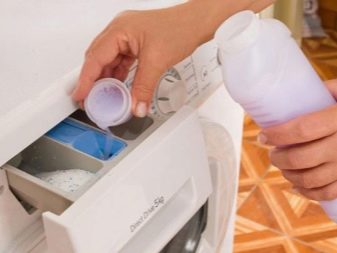
How to dry?
When the washing procedure is over, and the washing machine has given the final signal, the wet jacket or suit is placed on thick terry towels. Their material should be chosen taking into account the high moisture absorption. It should be noted that it will take a lot of them. So, the clothes are laid out on a horizontal surface on towels and begin to straighten, smoothing out all the wrinkles and thereby removing moisture. As the towels get wet, they are replaced with new ones. In this position, the clothes are left to dry completely.
It is important to remember that it is strictly forbidden to dry the membrane on heaters, and therefore it is important to allow clothes to dry slowly but independently in a room with proper air circulation. To do this, you can open the window and ventilate the adapted place for drying well. In addition, the membrane is afraid not only of heaters, but also of direct sunlight, even if washing falls on the cold season.
Needless to say, washing and drying the membrane is not an easy task, but only in this case can all the useful properties of this unique material be preserved.


Tips & Feedback
To make the cleaning of products as simple and clear as possible, and the results to match the desired ones, Here are some tips to use at home:
- First of all, a quality thing always has detailed instructions for washing the product. It is necessary and important to read it, because the manufacturer knows better and more accurately.
- Experts advise adhering to the correct frequency of washing and not loading the washing machine when a speck suddenly appears.Wise housewives remove small stains with detergents, for example, Fairy, wetting a cotton pad in them and applying them to the product. Later, the material is rinsed. Antipyatin soap also acts in the fight against stains, requiring high-quality rinsing after its use.

Reviews about washing membrane things, as a rule, belong to young mothers. Toddlers who love to run through puddles or carry a stone in their hands all the way home get their clothes dirty very quickly and strongly. Caring housewives are in no hurry to wash things in the washing machine, resorting to hand washing with brushes, soap, special balms and emulsions. Machines are trusted only with the rinsing process, because, according to many, removing foam from a freshly washed item is a laborious and tiring process. With poor-quality removal, you can get a suit in snow-white stains at the exit.

However, other mothers and young people who are in a hurry are solving the issue of cleaning with a washing machine. Their reviews are very positive, because, subject to all the rules, the membrane does not lose its properties. It is worth noting that wash membrane outerwear only separately from other things, thereby preserving the brightness and saturation of the original pattern.
Some, however, use any good powders, arguing that the membrane used in clothes that can be bought on the Russian market is only called a membrane. It does not have those properties of water resistance, and therefore there is no need to suffer with washing. Perhaps this is true. However, if you have a good thing of a foreign brand in your hands, you should not experiment with it, because for sure its cost is ten times higher than any membrane washing agent.
In the next video, watch all the details of caring for membrane clothing.




























